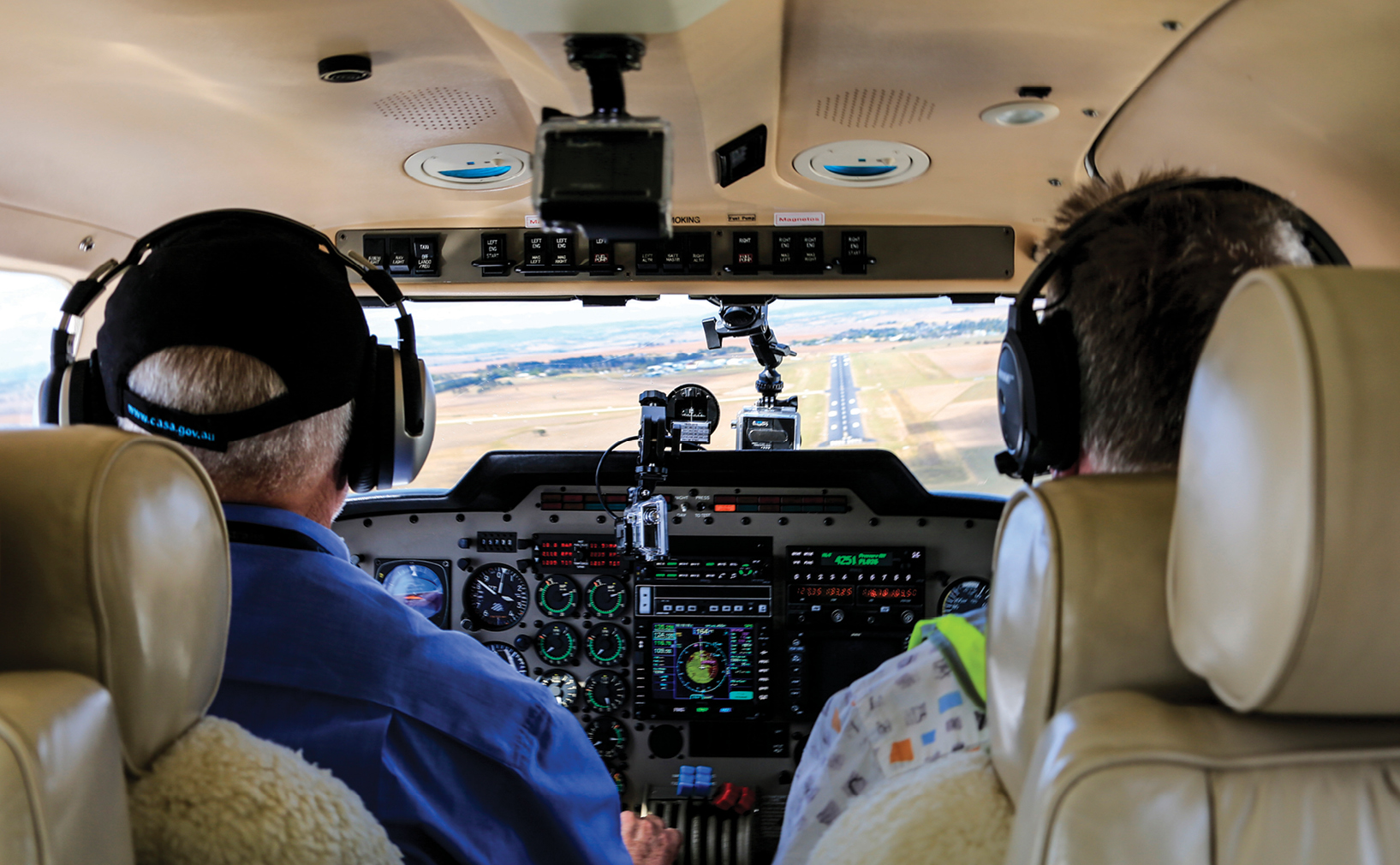- For each flight, the minimum documents are:
- licence, medical, flight manual, maintenance release
- licence, medical, photo ID, flight manual
- licence, passport, flight manual, maintenance release
- licence, photo ID, flight manual, maintenance release
- Dropping of articles from an aircraft is:
- only permitted with CASA approval
- only permitted if holding a low-level endorsement
- prohibited
- only permitted if not over people or populous areas
- Before commencing a flight below 10,000 ft, the pilot in command must study the authorised weather forecasts for the route. The authorised forecasts are:
- GAF, GPWT
- GAF and TAF
- GAF, GPWT and SIGWX
- GPWT and TAF
- The authorised weather forecasts for the planned destination aerodrome must be valid for:
- 30 minutes before and 30 minutes after ETA
- 30 minutes before and 60 minutes after ETA
- 60 minutes before and 60 minutes after ETA
- ETA
- The pilot in command of an aeroplane must not fly over a populous area or public gathering (unless taking off or landing) below:
- 500 ft above the highest feature or obstacle within a horizontal radius of 600 m of the point on the ground or water immediately below the aeroplane
- 1,000 ft above the highest feature or obstacle within a horizontal radius of 300 m of the point on the ground or water immediately below the aeroplane
- 500 ft above the highest feature or obstacle within a horizontal radius of 300 m of the point on the ground or water immediately below the aeroplane
- 1,000 ft above the highest feature or obstacle within a horizontal radius of 600 m of the point on the ground or water immediately below the aeroplane
- A pilot must nominate an alternate if their ETA at the destination is within 30 minutes before to 30 minutes after the forecast of:
- more than 4/8 cloud below 1,000 ft
- visibility less than 5 km
- more than 4/8 cloud below 1,500 ft
- crosswind at the maximum for the aircraft
- Visual meteorological conditions for a day VFR flight below 10,000 ft but above 3,000 ft AMSL are:
- 8 km vis, with cloud separation of 1,500 m horizontal, 1,000 ft vertical
- 5 km vis, with cloud separation of 1,500 m horizontal, 1,000 ft vertical
- 5 km vis, with cloud separation of 1,000 m horizontal, 1,000 ft vertical
- 8 km vis, with cloud separation of 1,000 m horizontal, 1,000 ft vertical
- A pilot must not commence take-off at a non-controlled aerodrome until a preceding departing aircraft using the same runway:
- has crossed the halfway point of the runway
- if the runway is more than 1,000 m, the other aircraft is at least 1,000 m beyond your lift-off point
- has commenced a turn
- if both aircraft are below 1,500 kg, and the other aircraft is airborne and at least 600 m beyond your proposed lift-off point
- When flying under the VFR, you must plan to fly at a VFR cruising level when you are in:
- Class G and above 3,000 ft AMSL
- Class G at all heights
- Class G and above 5,000 ft AMSL
- Class E airspace
- In cruise, a pilot should set:
- 1013 hPa
- local QFE
- the current local QNH within 100 nm of the aircraft
- the current local QNH within 50 nm of the aircraft
- The final reserve fuel required for a piston-engine aeroplane with MTOW below 5700 kg is:
- 45 minutes
- 20 minutes
- as required
- 30 minutes
- You must submit a flight plan for a VFR flight:
- when planning to fly in Class C or D
- at all times
- when flying through a danger area
- when proceeding beyond 120 nm from departure point
- To operate under special VFR, a pilot must maintain flight visibility of at least:
- 1,000 m for an aeroplane and 600 m for a rotorcraft
- 1,600 m for an aeroplane and 800 m for a rotorcraft
- 1,000 m for an aeroplane and 800 m for a rotorcraft
- 1,600 m for an aeroplane and 600 m for a rotorcraft
- Which of the following is not a mandatory instrument for aeroplanes flying under the day VFR:
- indicated airspeed
- magnetic heading
- time piece
- attitude indicator
- An aircraft must be fitted with or carry an ELT:
- when flown more than 50 nm from departure
- when flown more than 100 nm from departure
- at all times
- only when in designated remote areas
To view the answers, go to the next page using the page navigation buttons below.


